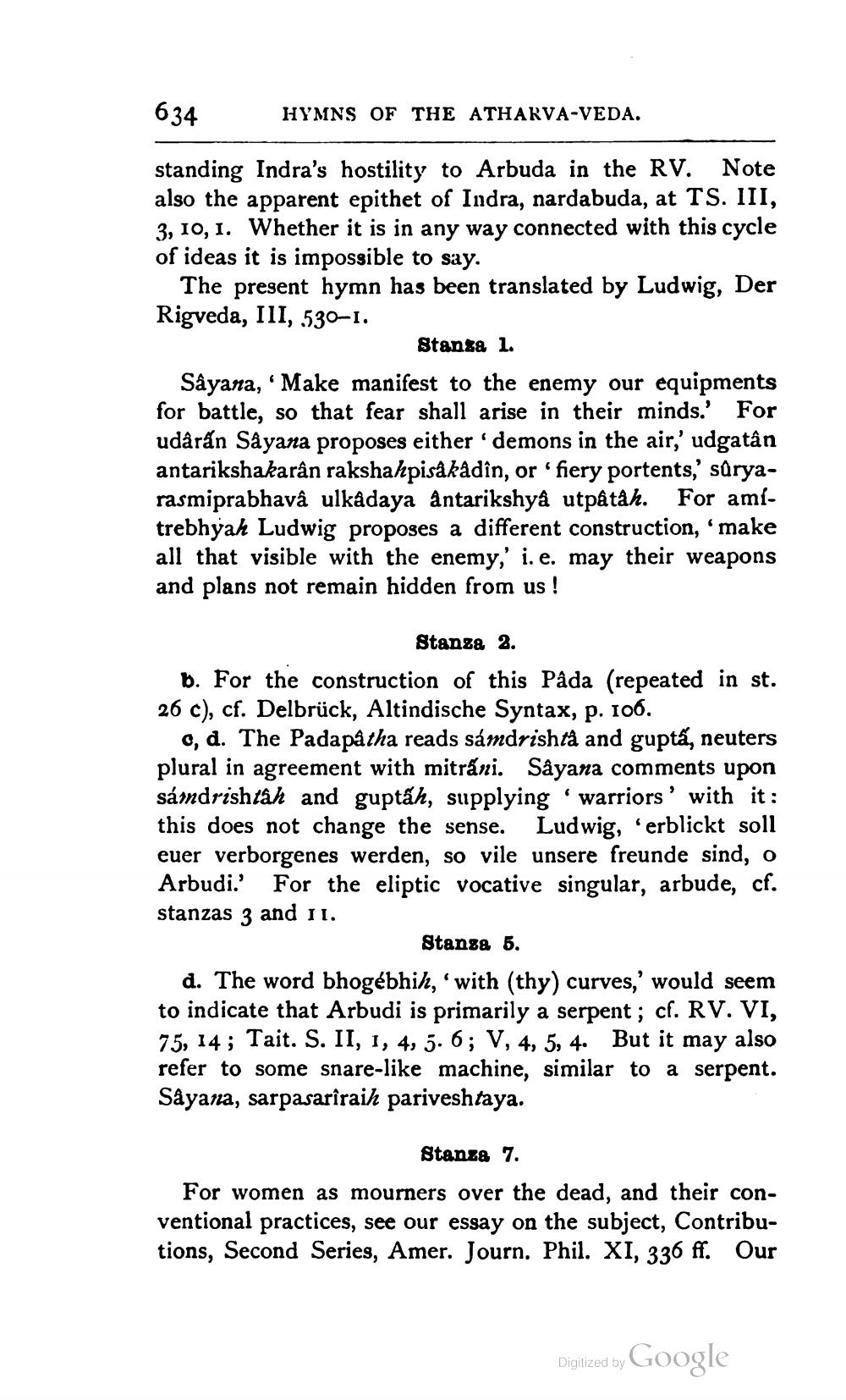________________
634
HYMNS OF THE ATHARVA-VEDA.
standing Indra's hostility to Arbuda in the RV. Note also the apparent epithet of Indra, nardabuda, at TS. III, 3, 10, 1. Whether it is in any way connected with this cycle of ideas it is impossible to say.
The present hymn has been translated by Ludwig, Der Rigveda, III, 530-1.
Stanza 1. Såyana, Make manifest to the enemy our equipments for battle, so that fear shall arise in their minds. For udårán Sâyana proposes either demons in the air,' udgatan antarikshakarân rakshahpisâkâdîn, or fiery portents,' süryarasmiprabhavâ ulkadaya antarikshyå utpåtah. For amltrebhyah Ludwig proposes a different construction, 'make all that visible with the enemy,' i. e. may their weapons and plans not remain hidden from us !
Stanza 2. 6. For the construction of this Pâda (repeated in st. 26 c), cf. Delbrück, Altindische Syntax, p. 106.
0, d. The Padapatha reads sámdrishtà and gupta, neuters plural in agreement with mitráni. Såyana comments upon sámdrishtah and guptah, supplying 'warriors' with it: this does not change the sense. Ludwig, erblickt soll euer verborgenes werden, so vile unsere freunde sind, o Arbudi.' For the eliptic vocative singular, arbude, cf. stanzas 3 and 11.
Stanga 5. d. The word bhogébhih, 'with (thy) curves,' would seem to indicate that Arbudi is primarily a serpent; cf. RV. VI, 75, 14 ; Tait. S. II, 1, 4, 5. 6; V, 4, 5, 4. But it may also refer to some snare-like machine, similar to a serpent. Sayana, sarpasarîraih pariveshtaya.
Stanza 7. For women as mourners over the dead, and their conventional practices, see our essay on the subject, Contributions, Second Series, Amer. Journ. Phil. XI, 336 ff. Our
Digized by Google




